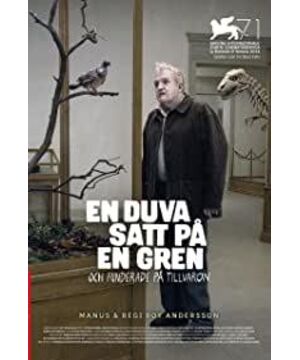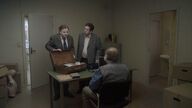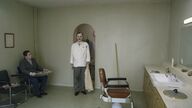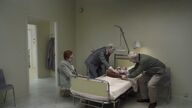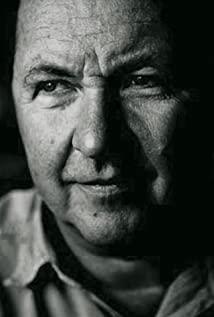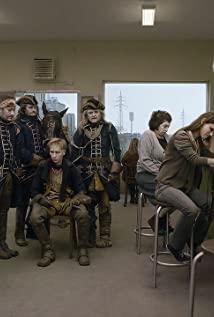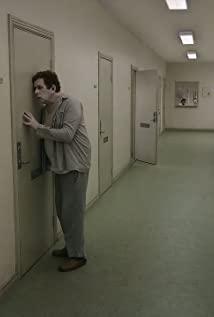1. I'm glad to hear that you are doing a good job
. It's a disappointment. Life can be good, but it's definitely not a happy ending. Of course, acting can only play the good side, but in fact we all get sick and all die, which is terrible, but this is a fact and we can only choose to accept it.
——Roy Anderson's
"Holding Sparrow Quiet", like the other two in the "Trilogy of Life", is a song of disappointed ones. Roy Anderson is like a slow but keen camera, capturing all the disappointments in life, and then using his paranoid fixed-length lens to list one in front of the audience.
People stand in front of the window and say to the person on the phone, "I'm glad to hear that you did a good job." Such scenes fall in different places in the movie, which is a footnote to the worldview of the movie-if life is good, then Of course happy, but in fact people are always disappointed. The phone is important as a prop. It allows communication at the same time without having to face-to-face. "I'm glad to hear that you did a good job" has become a phone etiquette. When you tell this lie, your expression does not need to lie— —You are not happy, you are not happy at all, and there is sluggish disappointment on your face.
Just like Morandi's persistent focus on still life, Roy Anderson pays attention to the sense of emptiness and loss of modern people. As the final chapter of the "Trilogy of Life", "Han Zhi Que Jing" repeatedly describes the disappointing nature of life with similar rhythms, pictures and language. The three movies look so similar, and some people even lament that "he really puts the same I made this movie three times", and he may make more times, because the silence of life is far from over.
2. The fat man in
Northern Europe. The pale and tidy towns in Northern Europe are cold and sad under the lens of Roy Anderson, making people feel that any warm emotions will be covered with indifferent, frosty civilization. People seem to have no shortage of wealth, knowledge, faith, and fat. Everything that is not lacking fills the body, makes them obese, and hoards them in the bodies of these fat people for many years, fermenting, decayed, and then going beyond the fast modernity described by Kundera, and becoming slow again.
Both fat and empty.
In Roy Anderson's movie, the fat man in Northern Europe sits in clean and empty streets, bars, squares, stations, and parks, carrying civilized awkward fat and sitting aimlessly, all sweaty and fatigued individuals. Bloated and slow. Roy Anderson’s speed is also very slow. Whether it’s the speed of making a film in seven years or the speed of the characters in the movie, the camera simply has no speed in the space: "Hard Branches in Stillness" only has 39 shots, each The camera is a fixed scene, the protagonist who is barely recognizable is two blessed salesmen. They sell crude and clumsy funny toys, wander the streets, enter indifferent bars and small shops, and use a poor reason (lie) "We Want to bring happiness to people" for useless sales, only in exchange for indifferent silence.
The large-scale silence of the characters is Roy Anderson’s "weight loss" method. "The expressionless performance will make the content of the dialogue more prominent." He cleans the lens very cleanly. His narrative cleanliness determines his film. In his minimalist style, he uses this light style to describe important things, so his movies have an implicit emotional tension.
3. Three appointments with the god of death.
We continue to look down on the issues of dearth and importance.
At the beginning of the movie, three scenes of death are placed, which are collectively called "Three Meetings with Death":
A man opened a bottle of red wine by the window of Luoxue, and died of a heart attack due to force. At this time, his wife Making dinner happily in the kitchen behind him;
an old woman was dying on a hospital bed, clutching a handbag with all her jewels and inheritance in her hand. She wanted to take it to heaven. At this time, her son tried to drag the handbag away. The hospital bed slipped away;
an obese man died on the floor of the passenger ship. His corpse did not know what to do. At this time, the barmaid asked the question, how to deal with the sandwiches and beer that the deceased had not eaten? A fat man came to grab the beer and drank.
For Roy Anderson, death is a fact that must be accepted. Even if it is a terrible and heavy fact, once it has no choice, it becomes less heavy, even worse than a dinner or a dinner. Only a handbag and a glass of beer are important. The people around the deceased are still alive. They can't help but think and choose many things. Even if they are small and frivolous, they can't help but exceed the importance of death.
This is the true face of life.
4. Is it a drama or a movie?
"On the stage, the performance sets off the real presence and strengthens the real people. In the film, the performance cancels the appearance of the real presence and stifles the illusion created by photography."
-Robert Bree The
presence or absence of the loose audience (at the same time as the plot) is an important factor in distinguishing drama and film. In the third act of Beckett's "Freedom", the audience's entry interferes with the drama, which is a fierce expression of presence. Song's films are "written" films, another art that is distinct from drama. But in Roy Anderson's case, the original distinguishing factor has become a fuzzy boundary that is difficult to distinguish. The actors in the fixed scene execute and complete the performance strictly according to the on-site schedule. The camera does not move, and everything is almost static and slow.
The faces of the characters in "Han Zhi Tzu Quiet" are always painted white. This comes from the imitation of Japanese Noh drama. The uniform expressionlessness covers the differences between the actors, creates neat silence and highlights the importance of the lines. This is the habit of drama. . In Roy Anderson’s films, he does not distinguish or cares whether to distinguish between drama and film, or even whether to distinguish between photography and video. Everything is nothing more than a copy of an image. The only difference lies in the reproduction here. In the illusion result (movie), is there a flow of time?
In fact, even the moment of taking a photo, representing the moment of stillness and interception, is also proving the existence of movement. Therefore, unlike Bresson, who implements movement on the camera because he "sees movement, there is a sense of happiness", Roy ·Anderson's stillness and movement are the same, both are evidence of the flow of time.
5. Time is the end of a whole illusion
"Hard Branches and Quiet". When a man was waiting for the bus, he accidentally learned that today is Wednesday instead of Thursday as he thought. In this terrifying description, the characters are difficult to determine the facts. Either his own "thinking" is an illusion, or the testimony of others is an illusion. In short, he can't escape the illusion.
In Roy Anderson's idea, time is a whole. The past and the present need to be integrated. Time points are evenly distributed in time. Things that happen at the same time may not be at the same time. This illusion is close to dreams. He expresses time in this way more than once in the movie. For example, in "Songs from the Second Floor", the dead and the living are wandering in the same space. In "Hard Branches", the ancient Swedish king and him The army passed by the modern bar.
Regarding the truth of life, if we are accustomed to finding answers in the order of time (memory or history), then we might as well watch Roy Anderson's movie, such as a specimen of a pigeon resting on a branch in a glass cabinet, yes. Existential thinking may only jump out of the order of time before it can jump out of the answer.
[Hair black and blue literature, don't turn it]
View more about A Pigeon Sat on a Branch Reflecting on Existence reviews


